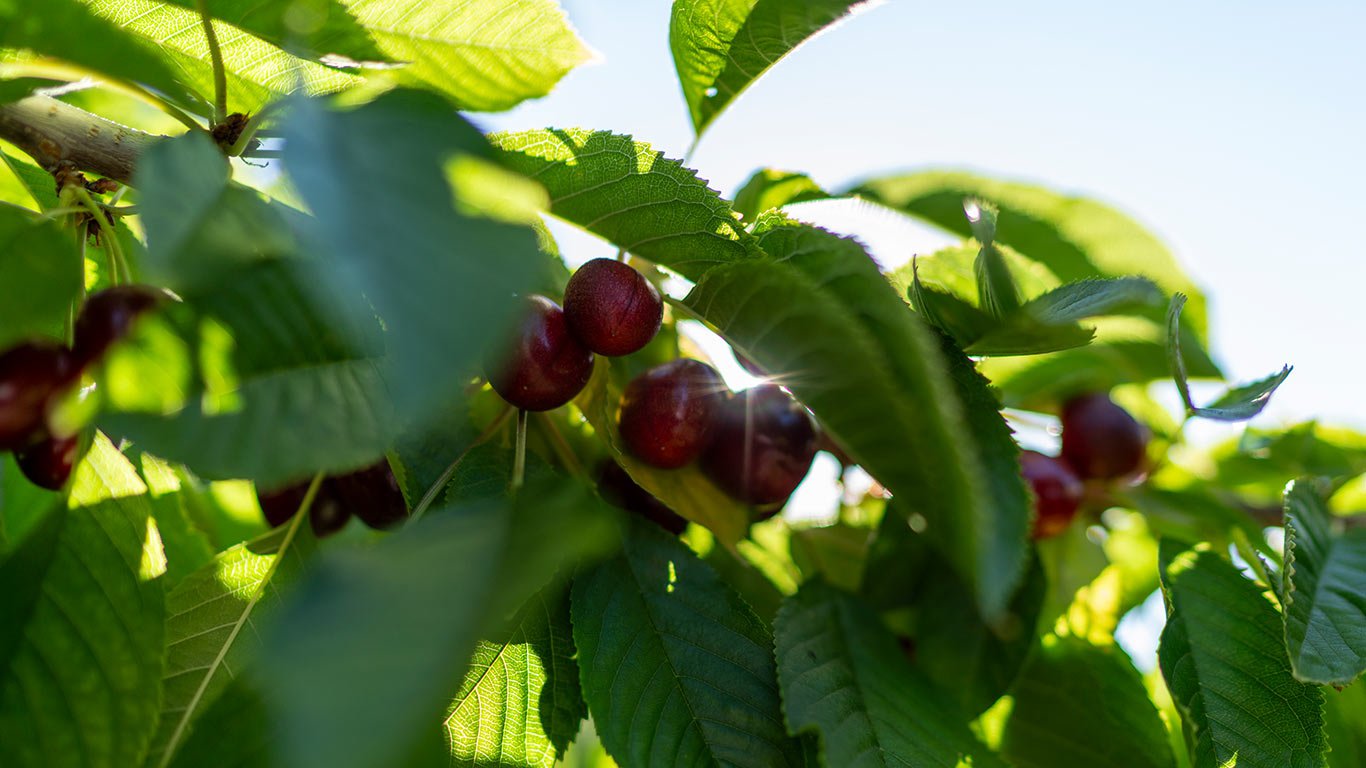In the late 19th century, a prospector named Dan Gamble walked east-west across the American continent from Nova Scotia, Canada, to Washington State, in the furthest top-left corner of the US. There he panned for gold and silver, and founded a logging operation on driftwood salvaged from the river. Around 1910, he planted the first apple trees in the Brewster area, growing enough fruit to fill a new warehouse that he built with lumber from his mill, and insulated with sawdust.
More than a century later, his great-grandson Cass Gebbers reflects on Gamble’s legacy, which has since extended to six generations of farmers on a domain that now reaches across 13,000 acres of apples, and 3,500 of cherries. As patriarch of the fourth generation, as well as president and CEO of Gebbers Farms, Cass considers it part of his duty to teach his own kids and grandkids, who are also his co-workers, about the family history.
“They need to know who worked hard to scratch the gravel and make all this happen.” When he comes to the job itself, he sees his role as similar to that of his own border collies. “I get up early and make a big circle around the family herd.”
His brother and sons run the orchards, while the broader Gebbers dynasty constitutes “cowboys, salesmen, government affairs personnel, packing people, diesel mechanics, all working together, all playing on the same sports teams.” The size and closeness of the clan have clearly helped that business grow, creating an environment that so many direct descendants (there are 58 cousins in the sixth generation) want to stay and strive within.
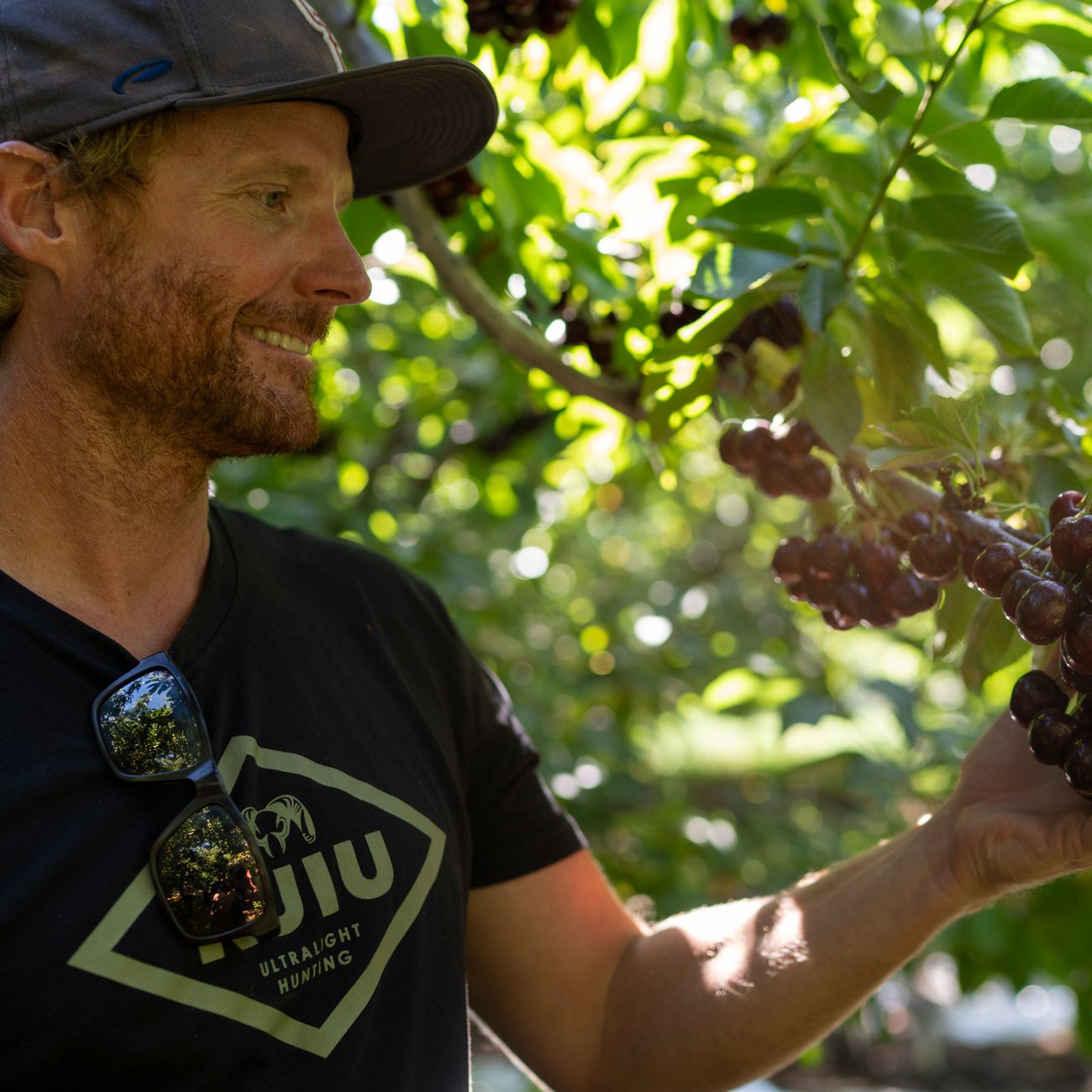
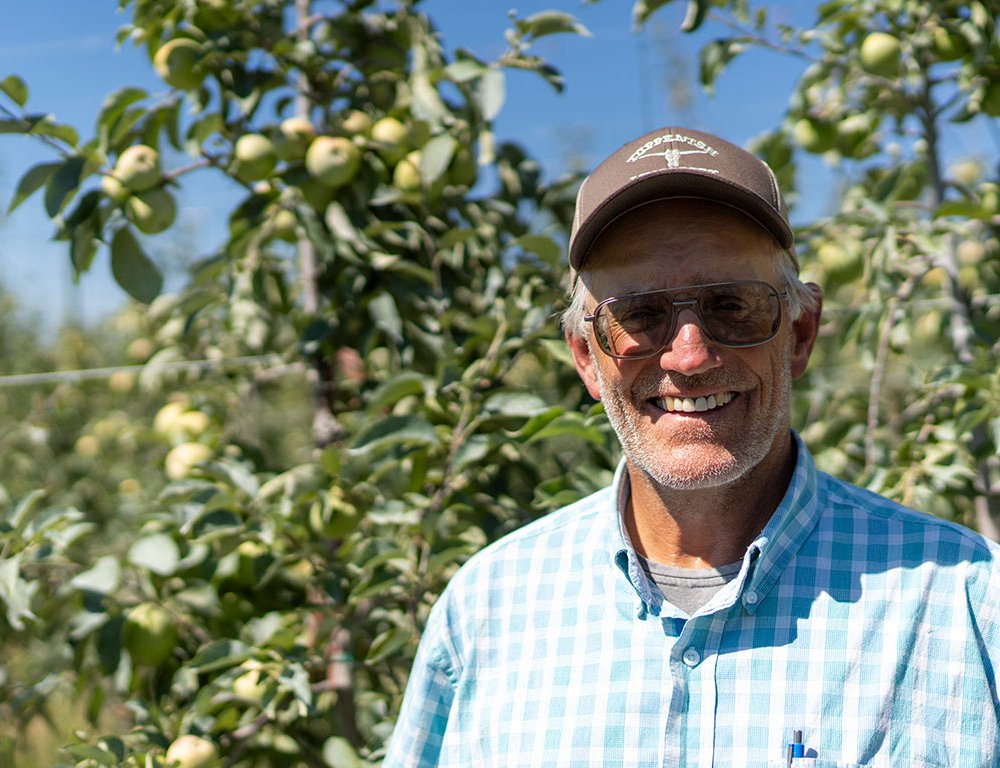
But their ongoing success proceeds from the excellence of their fruit, which is in turn a gift of geography. “It’s easy for farmers to say, ‘I’m a good grower’,” explains Hawkins Gebbers, Cass’s nephew, who handles post-harvest management here, among other duties. “But most realize that the quality of their produce comes from the land they ended up on.”
He doubts that his great-great-grandfather quite realised that this particular area had the potential to be “a capital of the world for apples, and cherries too,” as Hawkins puts it. But his chosen location in the “rain shadow” of a mountain valley, high above the confluence of the Columbia and Okanogan rivers, turned out to be the perfect terroir, with an optimal temperature differential between warm days and cool nights.
“The dirt is wonderful too,” says Hawkins, “and we have all this fresh water from rivers and lakes.” Elevation is also key, in that the higher you grow, the longer your harvest window. “You might pick a Honeycrisp apple or a Lapin cherry down by the river at 600 feet about a month before you’d pick them up here at 3,500 feet.” The harvest being his speciality, he knows well that apples are relatively simple to pick and process compared to cherries.
The latter, for example, can’t really get wet while they’re still on the tree, which is irrigated from below. Among Hawkins’s memories of growing up around these crops (he once got in trouble for throwing cherries from the patios, although he says it did improve his pitching arm for playing baseball), is the sound of those fruits popping under pressure during the valley’s occasional rains. “When a cherry takes on distilled water, it wants to suck it in because of osmosis, and it soaks up so fast that it splits. So, rain can destroy a whole crop.”
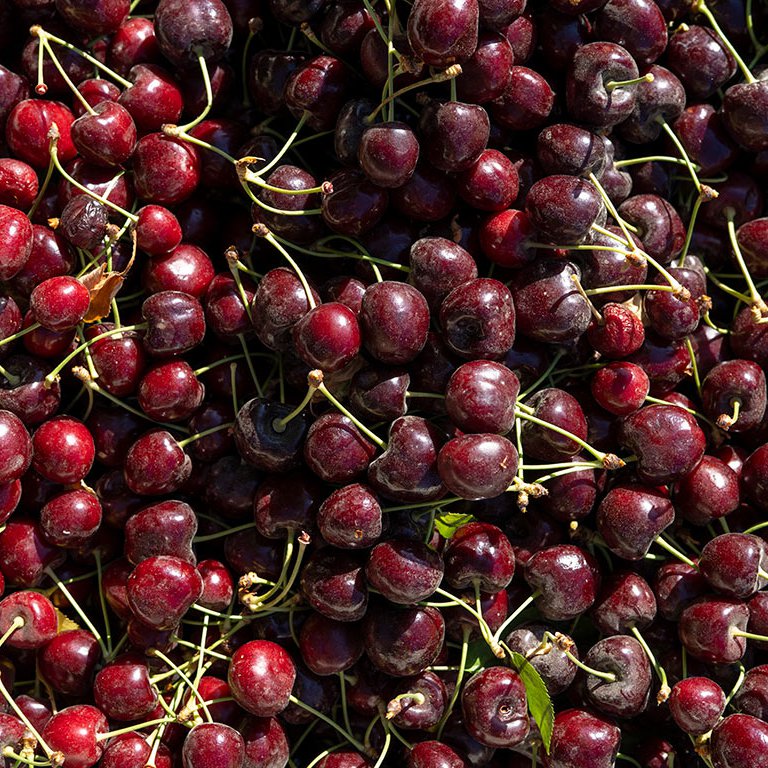

These days that happens less often because of a “drying programme” that involves a vast outlay of the family’s now considerable resources. “We’ve got these big helicopters, and if there’s a big rainstorm we’ll have them to blow a lot of air down from a high and safe distance, so every cherry in the valley will be dried at least once. It’s like the Wild West out there when we’re drying.” This kind of farming, as Hawkins explains it, means regulating natural chemical processes on a massive scale. Apples, for example, are “climacteric”, which means they can keep ripening once separated from the plant.
“They take in oxygen, they fuel-burn from starch to sugar, and exhale CO₂.” All of which means they can be stored in atmosphere-controlled rooms for much longer – up to 14 months – before sale and consumption. “When I do tours of the orchards with kids I talk about putting the apples to sleep until it’s time to wake them and bring them to market.” Cherries, meanwhile, effectively begin to die as soon as they’re plucked. “Instead of breathing, they’re panting, as they go into a state of rapid exchange.”
The operation then requires an equally rapid response, hurrying the fruit into a system of “cold chain management”, outlined by Hawkins’s first cousin Michael Taylor. Michael’s role is focused “on the warehouse side”, and in the short summer harvest season – mid-June to mid-August – his main concern is the production and packing of cherries.
“In that time we’ll process a million and a half pounds of cherries per day, which is a lot,” he says. Within as little as two hours of picking, each piece of fruit will already be counted and scanned before chilling in big underground water tanks, or “hydrocoolers”, that bring their temperature right down from the region of 80 degrees fahrenheit to somewhere below 45. Having previously been the enemy, water is now vital in keeping the cherries protected on their way along various belts and slides towards miniature nitro-coolers that get them cold again on the way to the boxes and bags they’ll be shipped out in.
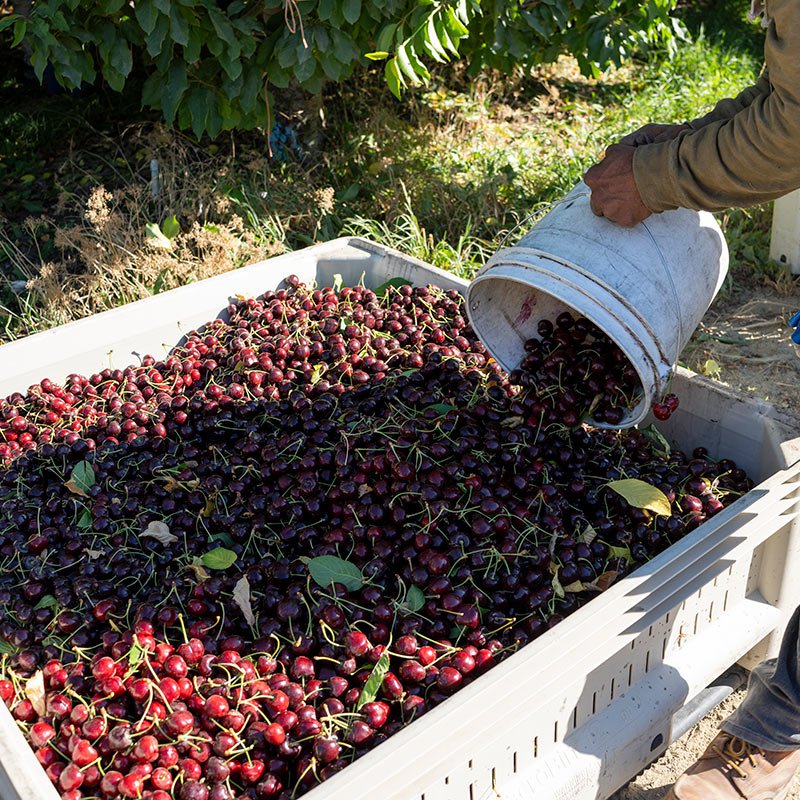
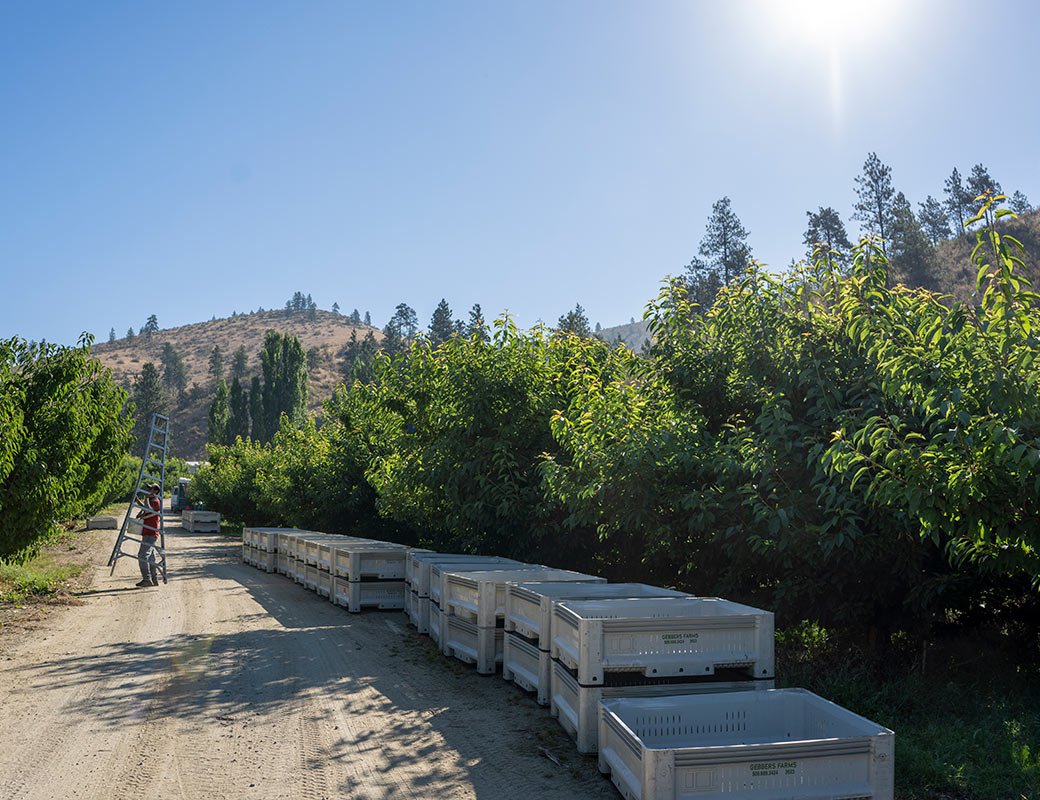
“Once packed,” continues Michael, “they go into wind tunnels that use an inverted fan to suck in very cold air.” Ideally, they should be down to 36 degrees by this point, and the quickness of the cold chain is something the family take immense pride in, he says. “It’s what we do best.” The biggest recent change to that process has been in sorting technology, which now allows for each cherry to be digitally photographed 27 times for a global view, then graded by special software in terms of size and colour, which in turn help verify quality.
Shades and tones formerly classed as “mahogany” or “fire engine red” are now marked on a colour wheel designed by Washington State University, which instead assigns them numbers from 1 to 7. A deep dark 6 tends to mean a higher sugar content and a richer depth of flavour, ideal for transport to Spinneys for consumption within five days or so.
Our shoppers should look for the Chelan Fresh label (the marketing arm of Gebbers Farms), though some cherries are shipped in bulk and packed in Dubai for Spinneys own label, with an additional sticker showing that they came from Washington USA. Our stores also stock crisp and flavoursome apple varieties like Sugarbee, sourced from the very same warehouses where Mac Riggan – cousin of Cass Gebbers and Vice-President of Sales and Business Development – maintains a lifetime habit of eating one apple every evening, though he has to take it outside these days for food safety reasons.
He is 60 years old but looks much younger, perhaps because of that constant fruit intake, and he tends to share his cousin’s perspective on the company’s past and future. “We’re a very large family that has melded into a really well-run organization, with a lot of mutual respect, love, and consideration,” says Mac. “We take delight and joy in presenting the world with a first-class piece of fruit. We work hard to support each other and honour the legacy given to us. We cut no corners and do what’s right. And it’s always worked out in the end.”
